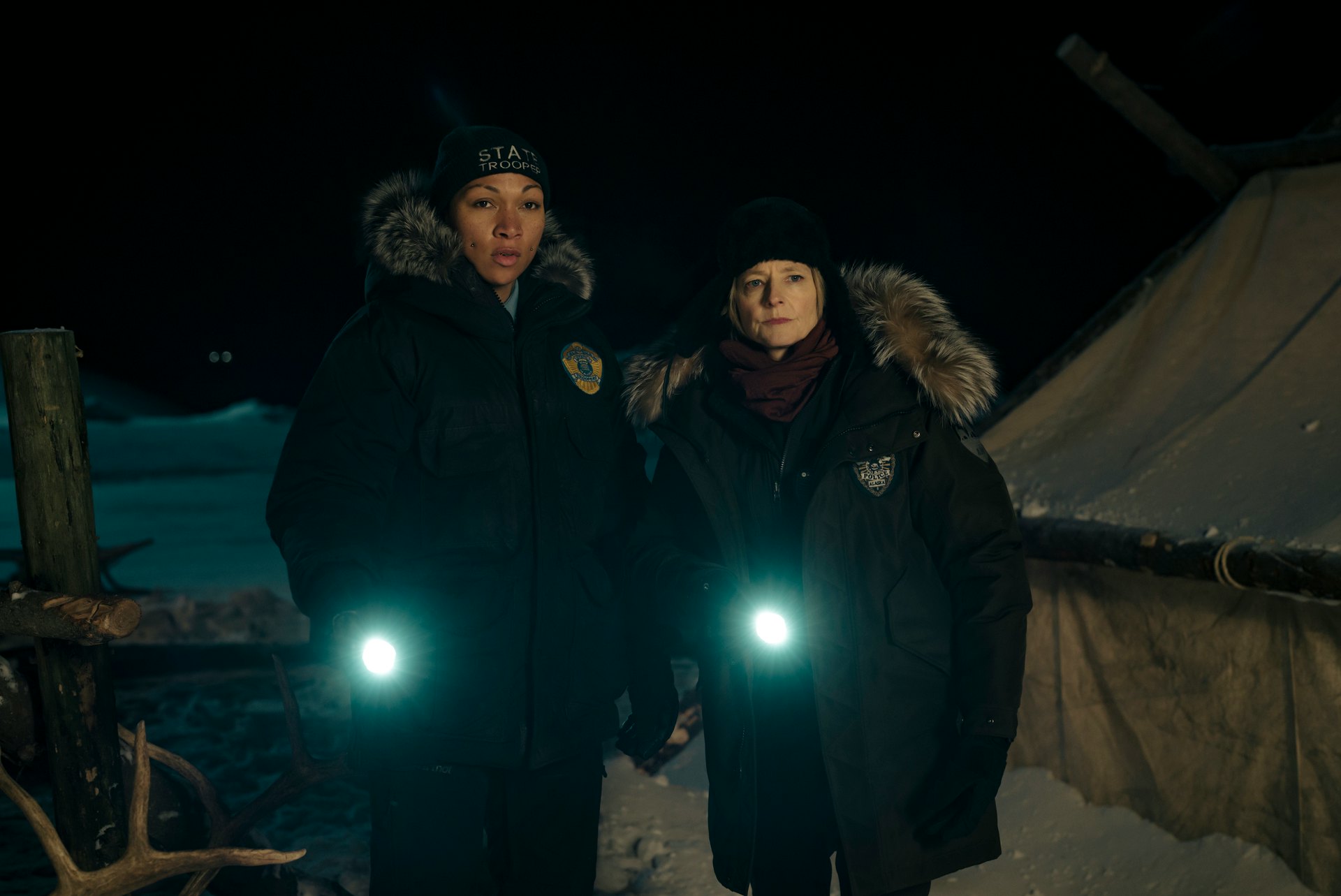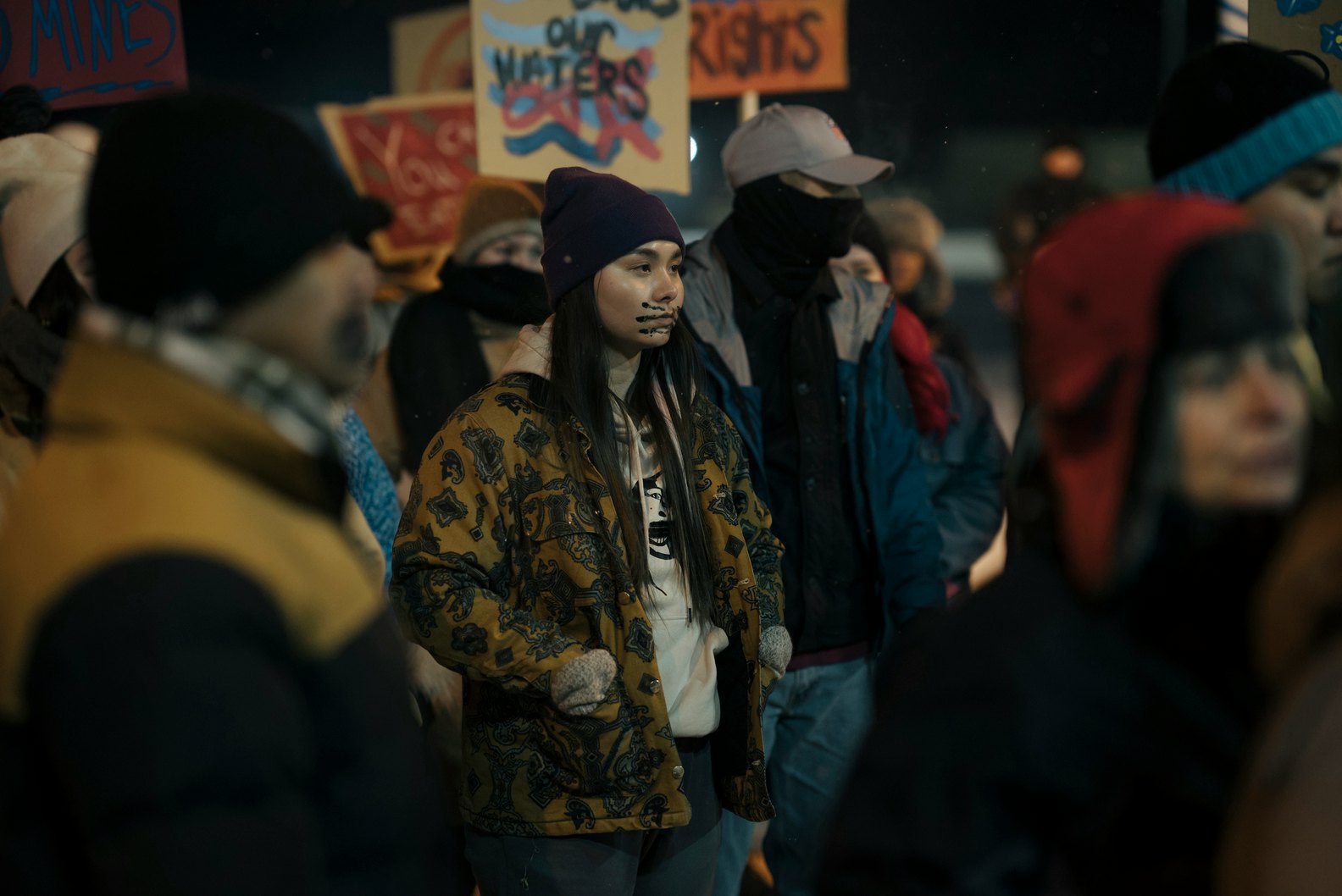
True Detective hasn’t felt like True Detective for a while. It’s been a decade since the first season of the neo-noir phenomenon launched a new era of A-list stars making the pilgrimage over to TV. But in the years since Matthew McConaughey and Woody Harrelson pondered whether time was a flat circle, True Detective lost the power it used to hold over pop culture. Even a back-to-basics reset with the third Mahershala Ali-led season, which returned the show to its sweaty Southern noir roots, couldn’t bring back the phenomenon.
True Detective is due a massive reset. Instead of the relentless heat of the American South, it needs the unforgiving chill of the Alaskan winter. Instead of a male detective duo, it needs two leading women. And instead of a coy dance around its more surreal elements, it needs to go full supernatural. All of these elements work together to make True Detective Season 4, subtitled Night Country, the most thrilling and invigorating season of the show since its first.

Jodie Foster leads True Detective: Night Country as Liz Danvers, the chief of police of Ennis, Alaska, a small town embroiled in an ongoing battle between its Indigenous residents and the powerful mining company whose widespread pollution is an open secret. On the edge of this town sits an arctic research station where eight researchers suddenly all go missing one night. When the researchers are discovered frozen naked in the ice a few days later, the bizarre case’s connection to a missing Indigenous girl forces Danvers and her former partner Evangeline Navarro (Kali Reis) to reluctantly reunite to solve a years-old mystery.
Foster, in a performance so steely that she could cut through armor, is magnetic to watch as the obsessive Liz Danvers, a brilliant detective exiled to this cold small town. Foster’s casting as one of the lead detectives is a clear callback to The Silence of the Lambs, but she instantly sets Liz Danvers apart from Clarice Starling with a performance as harsh and brutal as the show’s winter setting. Danvers is callous, inconsiderate, and sometimes even cruel to the people closest to her. She has a strained relationship with her Indigenous stepdaughter Leah (Isabella Star LaBlanc) and she’s alienated almost every person in the town through her various affairs with married men. Foster clearly relishes playing such an unlikable character, wearing Danvers’ heavy coat-like battle armor and scowling her way through an increasingly baffling case.
Reis, meanwhile, puts on an equally harsh performance as Navarro, Danvers’ former partner whose obsession with the missing Indigenous girl’s case caused the two of them to fall out. Night Country marks Reis’ second major acting role after making the transition from her boxing career, and she’s noticeably stiff in early episodes but opens up as she shares more screen time with Foster. While it’s sometimes hard to watch two lead characters who are both so aggressively unlikable, it’s almost a bold choice on showrunner Issa López’s part to make the show’s first female leads as complicated and thorny as past male True Detective leads. But if the tortured character angst threatens to get in the way of one’s enjoyment of the show, the full-fledged horror of Night Country injects something new and interesting into the main dynamic.

True Detective: Night Country is the first season to embrace the horror elements that previous seasons only sprinkled in. There are ghostly apparitions that may or may not be inventions of paranoid minds, liminal spaces that could speak to other planes of existence, and many, many things that go bump in the night. The vast, crushing darkness that surrounds the wintry Alaskan town lends to the supernatural dread, as do the Indigenous storylines that are brought to the forefront by Lopez. Reis’ Indigenous background lends her role more dramatic weight, but also allows her to play the Mulder to Foster’s Scully — anytime something strange or inexplicable happens, Danvers pooh-poohs it as Native spiritual nonsense, while Navarro is not so sure.
But apart from the obvious inspiration from John Carpenter’s The Thing, Night Country’s full-fledged horror approach is astonishingly effective. Lopez, who directs all six episodes of the season, displays a keen talent for employing the visual language of horror, amping up the dread and paranoia with every jump scare and every chilling long shot. Tying the supernatural elements in with its Indigenous storyline proves to be both narratively smart and emotionally profound — Night Country coming off the year of Scorcese’s Flower Moon and Reservation Dogs’ final season feels like a staggering evolution of Indigenous stories in Hollywood. And the season’s incredibly topical storyline of a mining company’s pollution impacting the Indigenous community is especially gutting, giving the season an electric real-world urgency.

The season’s bigger ideas and evocative supernatural elements help elevate the show’s somewhat smaller scale. Unlike the first and third seasons, Night Country is pretty contained. Flashbacks slowly unveil the missing pieces of the characters and their relationships, but this is as linear as True Detective gets, which adds to the feeling that Night Country was initially pitched as an original story before it got folded under the True Detective banner.
All the same, Night Country feels like the radical reinvention that True Detective needs. It’s dark, it’s grimy, it’s mysterious, it’s full of dread and the unknown. It’s the opposite of everything True Detective has been in the past, and yet it feels intensely of a piece with the show — and that’s not just because of the season’s frequent callbacks to the first season’s spiral. What made True Detective a phenomenon in the first place was that sense of uncanny woven into a searing character drama; Night Country brings back that aspect with a season that’s even stranger and beguiling. It’s what the show needs to become a phenomenon once again.







